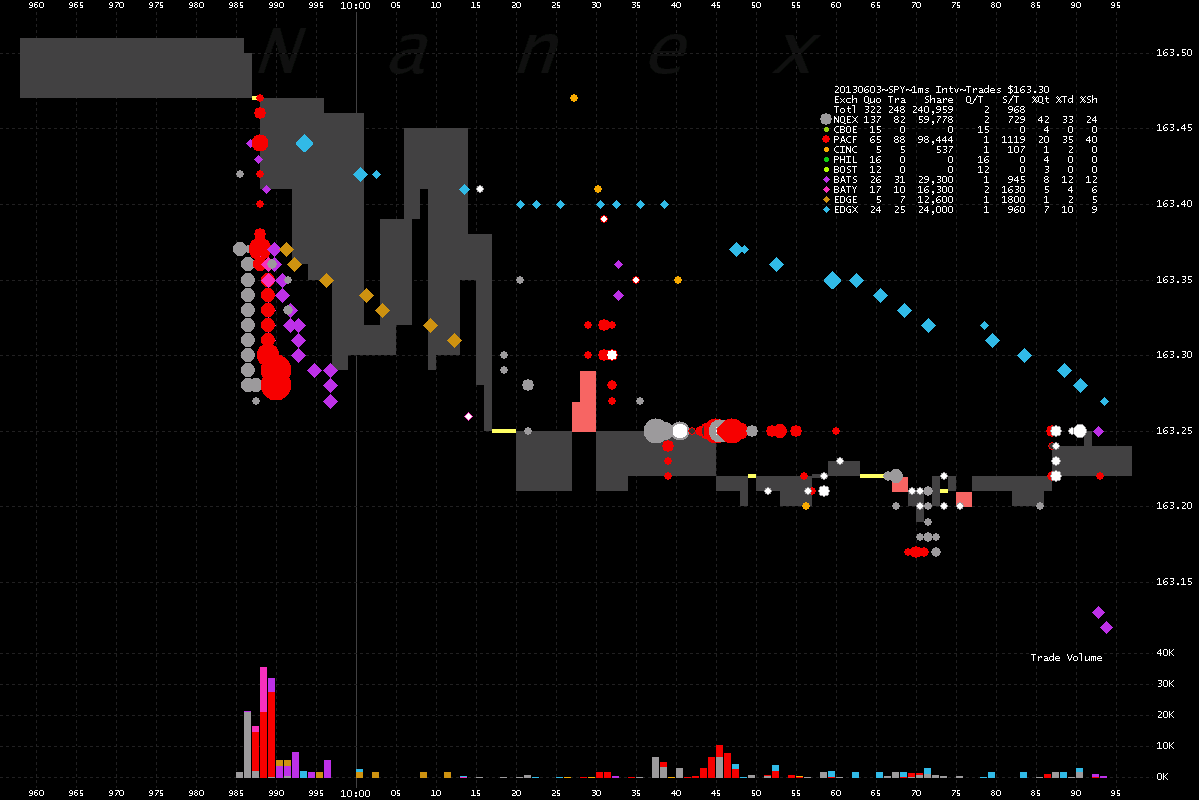High Frequency trading gets bad rap
In case you missed this, last week, there was apparently a buyout offer for Avon Products by an unrecognized private equity player from the UK. Shares shot up beginning around 11:35 a.m. and twenty times as many shares as usual changed hands in 25 minutes as the stock went from $6.60 to $8. But HFT firms were unlikely to be on the winning side, Bloomberg reports here.
High frequency trading computers probably can’t distinguish between an orderly market, and one where sudden spikes are cause by some news that can only interpreted by humans. Seeing the order flow come in probably triggered several high frequency firms computers to “step in” and buy. But when does it sell ? Most of these firms probably have hard profit targets when their computer algorithms kick in again to sell. So in all likelihood, the High Frequency trading computers got in, and then got out perhaps too early, thereby leaving a ton of money on the table.
But once again, the mighty U.S. stock markets proved vulnerable to manipulation. And it comes right after the indictment of Navinder Singh Sarao in the UK, who is allegedly responsible for creating the feared May 10, 2010 “Flash Crash”. Seriously, one person can do this ???
What amazes me is that whenever there is any kind of vulnerability exposed in the market, and even though the powers-that-be have no clue what just happened, media and the general public don’t wait a nanosecond to point the finger at High Frequency trading firms. The Flash Boys are indeed the Whipping Boys of the markets.
Here’s a more typical High Frequency trading play, and this post was written sometime in early 2014 when High Frequency firms were clearly “expecting” a move from the ISM number, and their computers were ready to cash in. The graphs are fascinating, and we get a very deep look into the nano-world of High Frequency trading.
High Frequency Trading (HFT) action on ISM
There was an article on Zerohedge yesterday on High Frequency Trading (HFT) sample. You can read the complete post here
Please click the images for larger sizes (Images credit – Zerohedge / Nanex).
Summary of key points
– Yesterday’s ISM numbers were supposed to be released at 10 am ET
– Some HFT firms apparently got the information 15 milliseconds earlier and executed large orders on the SPY (at 9:59:59.985 am)
– Similar activity can be noticed on the ES Futures 8 milliseconds prior to 10 am (9:59:59.992 am)
– Why the difference in 7 milliseconds ? The ISM number is released in NYC, and the E-minis are traded in Chicago. That’s how long it takes (7 milliseconds – speed of light to travel from NYC to Chicago) for the data to travel from NYC to Chicago.
My question is – does this kind of trading affect average people at all ? Let these guys spend a gazillion dollars on superfast computers and fight for first place in a race that’s entirely between themselves. Average investors are not fighting for this edge. I’m not an expert on HFT, but it seems like this fight is completely HFT vs HFT, much like big-city rival gangs. Or am i missing something ? Please weigh in if you are knowledgeable in this area.
Regardless, it’s a fascinating look at how High frequency trading sample works in the markets. The article seems to suggest that there could be hanky-panky involved in the fact that this data was available to certain players ahead of time. Yes, this is definitely a problem if it is true. But whose clocks are they going by ? What’s to say that the data itself was not released 15 milliseconds earlier than 10 am sharp :). I’m just amazed to see that transactions are being recorded and documented at the millisecond level. Both charts below show SPY and ES trading volumes at the millisecond level for different exchanges. Check out these awesome charts..Both charts show volume in a span of 150 milliseconds, which is just 15% of 1 second.



